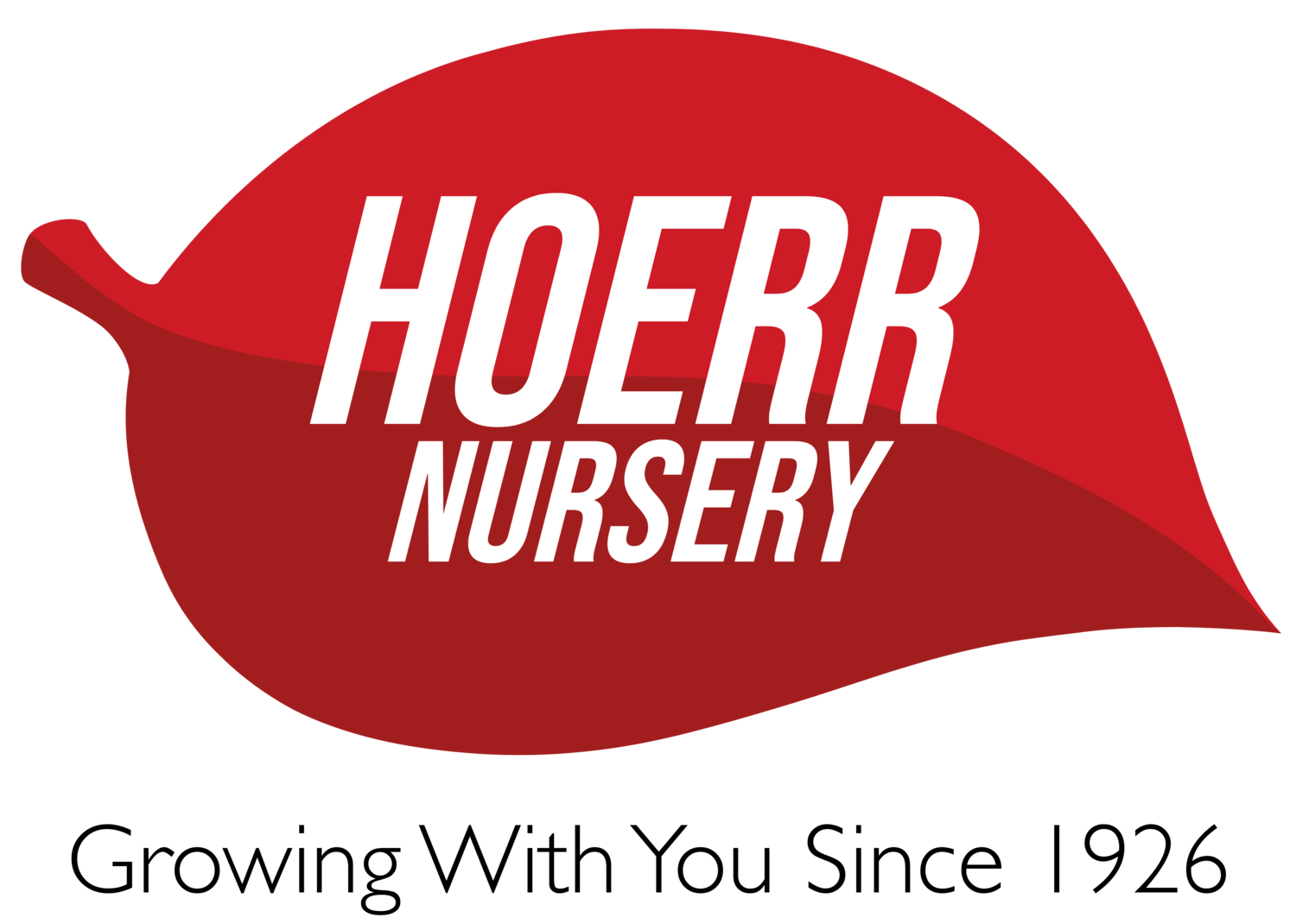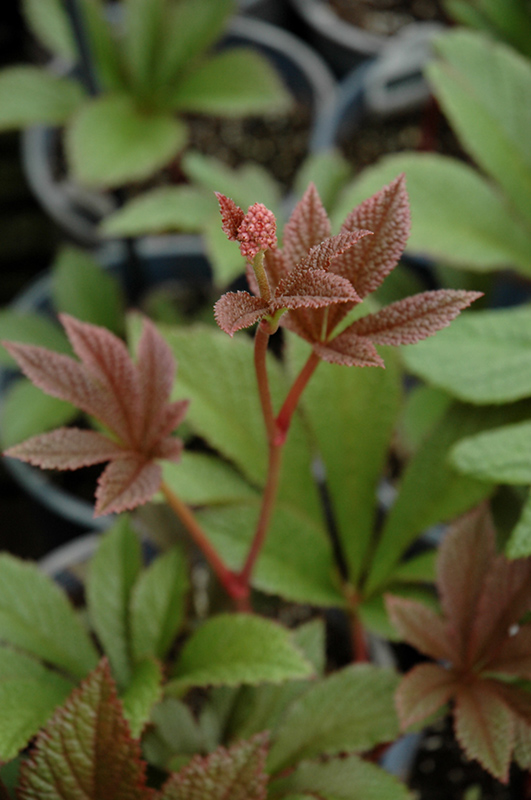Cherry Blush Rodgersia
Rodgersia henrici 'Cherry Blush'
Plant Height: 30 inches
Flower Height: 4 feet
Spacing: 3 feet
Sunlight:
![]()
![]()
Hardiness Zone: 4a
Other Names: Rodger's Flower
Description:
This attractive shade-loving groundcover is grown both for its large palm-like leaves that emerge a deep brick red color, as well as the plumes of airy pink flowers that tower above; must have evenly moist soil
Ornamental Features
Cherry Blush Rodgersia features airy plumes of lightly-scented pink flowers rising above the foliage from late spring to early summer. Its attractive large textured oval palmate leaves emerge brick red in spring, turning dark green in color with distinctive coppery-bronze edges throughout the season. The red stems are very colorful and add to the overall interest of the plant.
Landscape Attributes
Cherry Blush Rodgersia is an herbaceous perennial with a rigidly upright and towering form. Its wonderfully bold, coarse texture can be very effective in a balanced garden composition.
This is a relatively low maintenance plant, and should be cut back in late fall in preparation for winter. Deer don't particularly care for this plant and will usually leave it alone in favor of tastier treats. It has no significant negative characteristics.
Cherry Blush Rodgersia is recommended for the following landscape applications;
- Vertical Accent
- Mass Planting
- General Garden Use
- Groundcover
- Bog Gardens
Planting & Growing
Cherry Blush Rodgersia will grow to be about 30 inches tall at maturity extending to 4 feet tall with the flowers, with a spread of 4 feet. When grown in masses or used as a bedding plant, individual plants should be spaced approximately 3 feet apart. It grows at a slow rate, and under ideal conditions can be expected to live for approximately 10 years. As an herbaceous perennial, this plant will usually die back to the crown each winter, and will regrow from the base each spring. Be careful not to disturb the crown in late winter when it may not be readily seen!
This plant does best in partial shade to shade. It prefers to grow in moist to wet soil, and will even tolerate some standing water. It is not particular as to soil pH, but grows best in rich soils. It is somewhat tolerant of urban pollution. Consider applying a thick mulch around the root zone over the growing season to conserve soil moisture. This is a selected variety of a species not originally from North America. It can be propagated by division; however, as a cultivated variety, be aware that it may be subject to certain restrictions or prohibitions on propagation.

